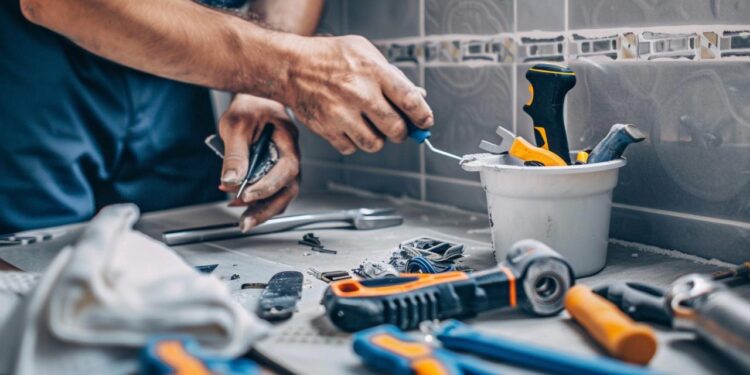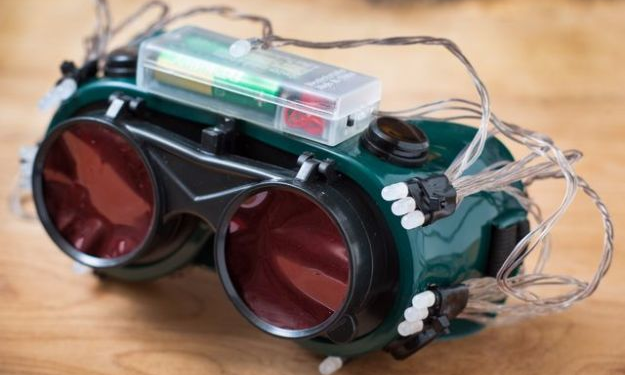Home Improvement Tools 2025 takes center stage, showcasing the evolution and future trends in tools that are set to transform the industry. From smart home tools to sustainable innovations, this overview delves into the exciting advancements awaiting homeowners and professionals alike.
Home improvement tools have come a long way over the years, evolving to meet the changing needs of DIY enthusiasts and professionals alike. From simple hand tools to power tools and smart devices, the tools available for home improvement projects have become more advanced and efficient.
Evolution of Home Improvement Tools
Historically, home improvement tools were basic hand tools like hammers, saws, and screwdrivers. As technology advanced, power tools such as drills, saws, and sanders became popular for their efficiency and speed. In recent years, smart tools equipped with sensors and connectivity features have revolutionized the way projects are tackled, providing real-time data and guidance to users.
Gaming industry is constantly evolving, with innovations shaping the future of gaming experiences. As we look ahead to 2024, Gaming Innovations in 2024 are expected to bring about new technologies and trends that will redefine the gaming landscape. From virtual reality to augmented reality, the possibilities are endless.
Current Trends in Home Improvement Tools
- Increased use of cordless tools for portability and convenience.
- Growth in the adoption of smart tools with features like Bluetooth connectivity and mobile app integration.
- Rise in the popularity of multi-functional tools that combine several functions in one device.
Key Advancements Expected
- Integration of artificial intelligence for predictive maintenance and project planning.
- Enhanced battery technology for longer tool runtime and faster charging.
- Development of eco-friendly tools with reduced carbon footprint.
Smart Home Tools

Smart home tools have revolutionized the way we approach home improvement projects by integrating smart technology into traditional tools. These tools are designed to make tasks easier, more efficient, and often more convenient for users.
Comparison of Traditional Tools vs. Smart Tools
- Efficiency: Smart home tools are often more efficient than traditional tools due to features like automation, precision control, and real-time feedback. For example, a smart drill can adjust its speed and torque based on the material being drilled, resulting in faster and more accurate results.
- Convenience: Smart tools offer added convenience by enabling remote operation, voice control, and integration with other smart devices. This means users can monitor and control their tools from anywhere, saving time and effort. For instance, a smart thermostat can be controlled through a smartphone app, allowing users to adjust the temperature of their home even when they’re not there.
Examples of Popular Smart Home Tools
- Smart Thermostats: These devices can learn user preferences, adjust temperature settings automatically, and be controlled remotely via smartphone apps.
- Smart Locks: Smart locks offer keyless entry, remote access control, and integration with home security systems for added convenience and security.
- Smart Lighting: These systems allow users to control lighting levels, colors, and schedules through voice commands or smartphone apps, offering energy savings and ambiance customization.
- Smart Plugs: These devices can turn regular appliances into smart devices, allowing users to control power usage, set schedules, and monitor energy consumption remotely.
Sustainable and Eco-Friendly Tools
As the world becomes more conscious of environmental issues, the importance of sustainability in home improvement tools cannot be overstated. Eco-friendly tools not only contribute to a greener planet but also offer numerous benefits to users in terms of efficiency and longevity.
Recent advancements in technology have paved the way for the integration of AI in Legal Tech , transforming the legal industry. AI algorithms are now being used to streamline legal research, contract analysis, and even predict case outcomes.
These innovations are set to revolutionize the gaming experience for players worldwide.
Materials and Designs
Modern sustainable tools are often made from eco-friendly materials such as recycled plastic, bamboo, or sustainably sourced wood. These materials reduce the carbon footprint of the tools and help minimize waste in landfills. In terms of design, tools are being created with durability in mind, using renewable resources and energy-efficient manufacturing processes.
Innovative Practices
- Energy-Efficient Power Tools: Manufacturers are developing power tools that consume less energy while maintaining high performance levels. This not only reduces electricity usage but also lowers operational costs for users.
- Water-Saving Fixtures: Eco-friendly plumbing tools and fixtures are designed to conserve water without compromising on functionality. This includes low-flow faucets, showerheads, and toilets that help homeowners reduce their water consumption.
- Recyclable Packaging: Sustainable tools often come in recyclable packaging to minimize waste. By using biodegradable or easily recyclable materials, manufacturers are reducing the environmental impact of their products from production to disposal.
- Long-Lasting Durability: Sustainable tools are built to last, reducing the need for frequent replacements and ultimately cutting down on material consumption and waste. Investing in durable tools also saves money for users in the long run.
DIY vs. Professional Tools
When it comes to home improvement projects, choosing the right tools is crucial for achieving the desired results. DIY enthusiasts and professionals have different needs when it comes to tools, and understanding the differences between tools designed for DIY projects and those used by professionals is essential for selecting the appropriate tools for the job.
Key Features for DIY Tools
- Cost-effective: DIY tools are typically more affordable than professional-grade tools, making them accessible for hobbyists and homeowners.
- User-friendly: DIY tools are designed to be easy to use, with clear instructions and simple operation for beginners.
- Multipurpose: DIY tools are often versatile and can be used for a variety of projects around the home.
Key Features for Professional Tools
- Durability: Professional tools are built to withstand heavy use and are made from high-quality materials for long-term performance.
- Precision: Professional tools offer greater precision and accuracy, essential for professional projects that require a high level of detail.
- Power: Professional tools are often more powerful than DIY tools, allowing professionals to tackle larger and more complex projects.
Recommendations for DIY Enthusiasts
- Cordless Drill: An essential tool for any DIY enthusiast, perfect for drilling holes and driving screws.
- Hammer: A versatile tool for a wide range of projects, from hanging pictures to building furniture.
- Tape Measure: Precise measurements are key in DIY projects, making a tape measure an indispensable tool.
Recommendations for Professionals
- Compound Miter Saw: Ideal for making precise cuts in wood for professional carpentry projects.
- Rotary Hammer Drill: A powerful tool for drilling into tough materials like concrete, essential for professional construction work.
- Impact Driver: Offers high torque for driving screws quickly and efficiently, a must-have for professionals working on large projects.
In conclusion, Home Improvement Tools 2025 presents a landscape of cutting-edge tools that cater to efficiency, sustainability, and functionality, revolutionizing how we approach home improvement projects.









